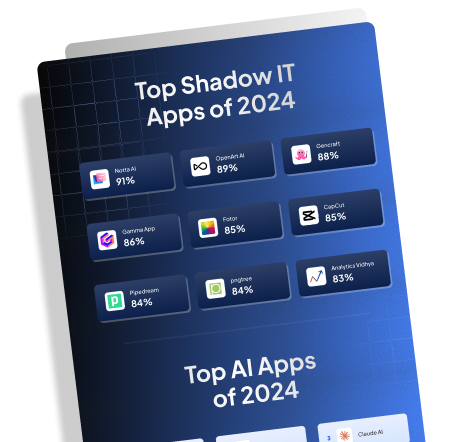Ever felt overwhelmed by the sheer number of vendors your IT department handles daily? Managing IT vendors can be a maddeningly complex task, from juggling multiple contracts to ensuring seamless integration. But don’t worry—you’re not alone, and we’re here to cut through the noise. In this article, we’ll break down the top considerations you need to manage your IT vendors effectively so you can focus on driving your business forward. Want to dive deeper into Vendor Management? Visit Torii’s Vendor Renewal Management for more insights. Stick with us; clarity is just a scroll away.
Managing IT vendors effectively is vital for any organization that relies on external services for its operations. There are several key considerations to keep in mind to ensure a successful partnership. Firstly, establishing clear contracts and expectations is crucial. Why? Because ambiguity can lead to misunderstandings and friction. Both parties should know their responsibilities and expectations from the onset. Ensure that the contracts outline specific deliverables, timelines, and performance markers.
Ongoing communication is another cornerstone. Maintain regular contact with your vendors to discuss progress and address any issues promptly. This can be through scheduled meetings, emails, or even instant messaging. Open lines of communication help in nipping problems in the bud and keeping everyone on the same page.
Regularly monitoring vendor performance is equally essential. How else would you ensure they are meeting their obligations? Implement a system for tracking performance against the agreed-upon metrics. This might include service quality, response time, and overall reliability.
Service Level Agreements (SLAs) for Effective Monitoring
Service Level Agreements (SLAs) form the backbone of monitoring efforts. SLAs clearly outline expected service levels and the consequences of not meeting these standards. Make sure these are detailed and enforceable. Regular compliance checks against the SLAs help in keeping the vendor accountable.
Negotiating favorable terms in the contract can save your organization a lot of time and money. Look for flexible terms that allow for adjustments as your needs change. Effective negotiation ensures that you are not locked into an unfavorable contract. Cost control and risk management are also critical considerations. Keep an eye on the financial aspects of your vendor relationship. Are you getting value for your money? Perform regular audits and assess if the vendor’s services are worth the cost. Risk management involves identifying potential risks and having mitigation strategies in place. This ensures that any risk is promptly managed before causing significant issues. Finally, periodic reviews are necessary to ensure that the vendor’s services continue to align with your organization’s evolving needs. Businesses change, and so do their requirements. Regularly assess if the vendor can still meet your current and future needs.
Best Practices for Managing IT Vendors
Effectively managing IT vendors can significantly enhance your organization’s operational efficiency and service delivery. Here are some practical best practices to ensure a fruitful partnership with your IT vendors:
1. Adopt a SaaS Management Platform (SMP)
- Utilizing a comprehensive Strategic SaaS Platform (SMP) such as Torii can streamline the vendor management process. SMPs offer tools for contract management, usage tracking, and compliance monitoring. To learn more about Torii and explore its capabilities, visit Torii’s Vendor Renewal Management for more insights.
2. Maintain a Vendor Scorecard
- Develop a detailed vendor scorecard to keep track of key performance indicators (KPIs) such as service quality, response times, and cost-effectiveness. This tool will help you quantitatively assess vendor performance regularly and make informed decisions.
3. Foster a Collaborative Relationship
- Treat your vendors as partners rather than mere service providers. Foster a collaborative relationship by involving them in strategic planning sessions and fostering an environment of mutual respect and cooperation. This approach can lead to more innovative solutions and better service delivery.
4. Invest in Knowledge Management
- Ensure that all vendor-related knowledge and documentation are centrally stored and easily accessible. This includes contracts, service-level agreements (SLAs), and performance reports. Having a well-organized repository of information will facilitate smoother operations and quick resolution of issues.
5. Conduct Vendor Audits
- Periodically conduct thorough audits of your vendors to ensure compliance with agreed terms and service levels. An audit assesses both performance metrics and financial transactions, helping you identify areas for improvement and cost-saving opportunities.
6. Implement a Risk Management Framework
- Develop a robust risk management framework tailored to your vendor management process. Identify potential risks, assess their impact, and implement mitigation strategies. Regularly review and update this framework to address emerging risks.
7. Provide Constructive Feedback
- Regular feedback sessions with vendors can promote continuous improvement. Provide constructive feedback on areas needing improvement and acknowledge areas where they are excelling. This balanced approach ensures that vendors remain motivated and aligned with your organization’s objectives.
8. Leverage Technology and Automation
- Utilize technology and automation tools to streamline repetitive tasks such as invoice processing, contract renewals, and performance tracking. Automation reduces manual workload, minimizes errors, and ensures that critical tasks are completed efficiently.
9. Establish a Vendor Relationship Management (VRM) Team
- Form a dedicated team responsible for managing vendor relationships. This team should oversee all aspects of the vendor lifecycle, from selection and onboarding to performance evaluation and contract renewal. A specialized VRM team ensures consistent and proactive management of vendor partnerships.
10. Stay Updated on Industry Trends – Keep abreast of industry trends and technological advancements that could impact your vendor relationships. Being informed allows you to proactively adjust your vendor management strategy and leverage new opportunities for improvement.
By implementing these best practices, your organization can establish a strong foundation for successful IT vendor management. This strategic approach not only optimizes vendor performance and cost-efficiency but also ensures that your vendors remain aligned with your evolving business needs.





